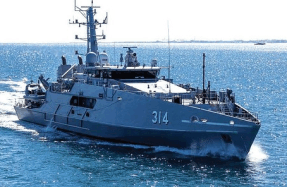PARADISE REGAINED


In the aftermath of World War II, the intense rivalry of the Cold War produced an arms race among world powers for supremacy in nuclear weapons. To become operational, these weapons had to be tested. While the USSR had access to the vast deserts and frozen wastelands of Central Asia for this, the US, Britain, and France turned to their colonial and occupied territories in the Pacific for ‘proving grounds’.
In five decades (1946–1996), 315 nuclear tests were carried out on islands and atolls across the central and south Pacific. One of these was Bikini, a remote atoll in the Marshall Islands. Its very name (‘place of coconuts’) conjures images of a tropical paradise — a ring of tiny, coral cays edged by golden beaches and swaying palm trees, surrounding a turquoise lagoon.
Banished to another island, its native residents were spared the awful spectacle — on 1 July 1946, of an atomic explosion above the lagoon. The soaring fireball marked the dawn of the Nuclear Age and heralded 22 more ‘tests’ over the next 12 years. Seventy-five years later, the World Heritage-listed atoll is an eco-tourist destination based on its dark history, rejuvenated marine environment, and world-class wreck diving.
THE ATOLL
The Republic of the Marshall Islands, of which Bikini Atoll is a part, is an archipelago of 29 coral atolls lying north of the equator about halfway between Australia and Hawaii. The atolls rise 6000m from the abyssal plain to no more than a couple of metres above sea level. Formed over millions of years by the accretion of coral reefs on a basalt core, falling sea levels exposed them about 4000 years ago.


Bikini Atoll, the northern-most atoll at 850km from the capital, Majuro, includes 23 small islets encircling a 594sqkm lagoon with a natural depth of 60m at its deepest point. The largest islet is Bikini, with an area
You’re reading a preview, subscribe to read more.
Start your free 30 days





